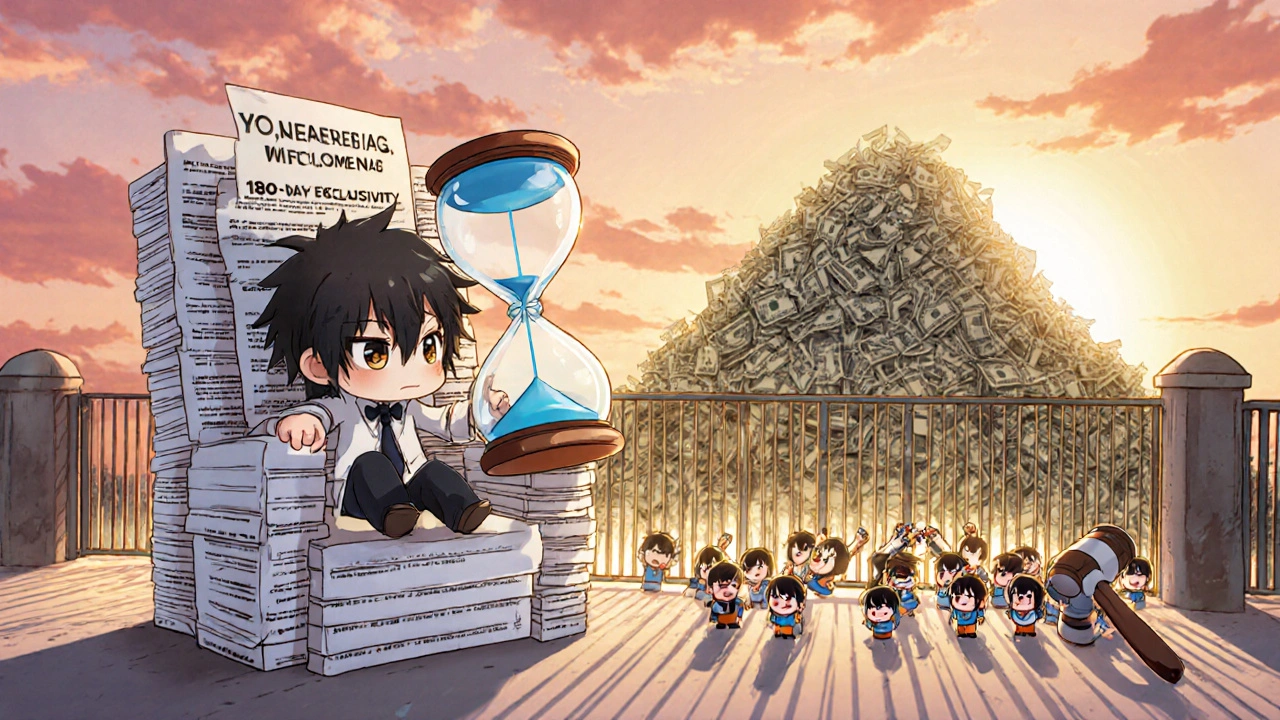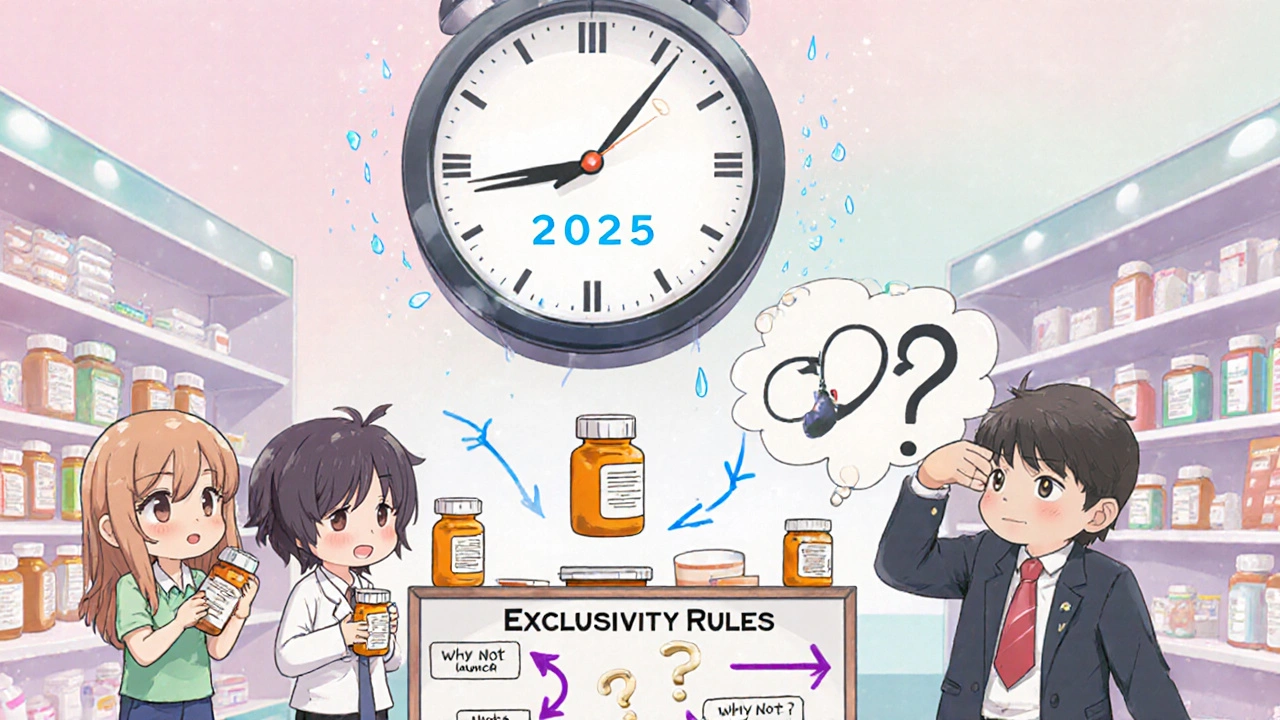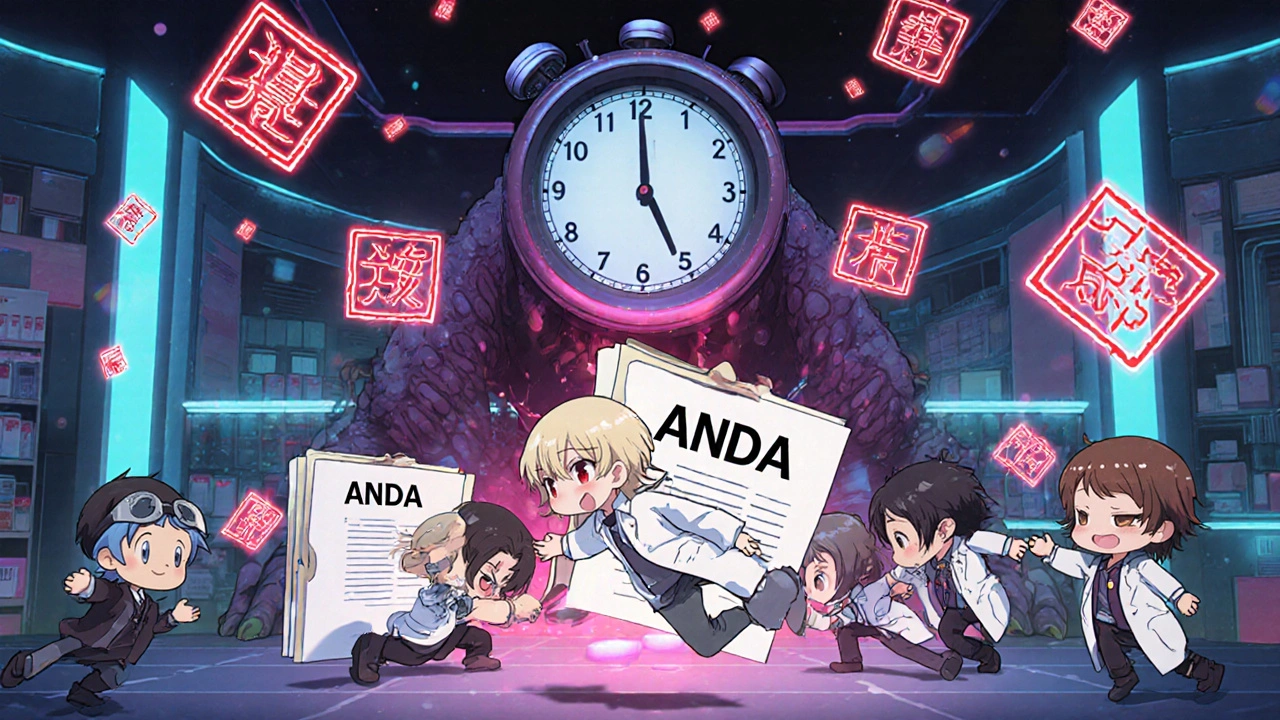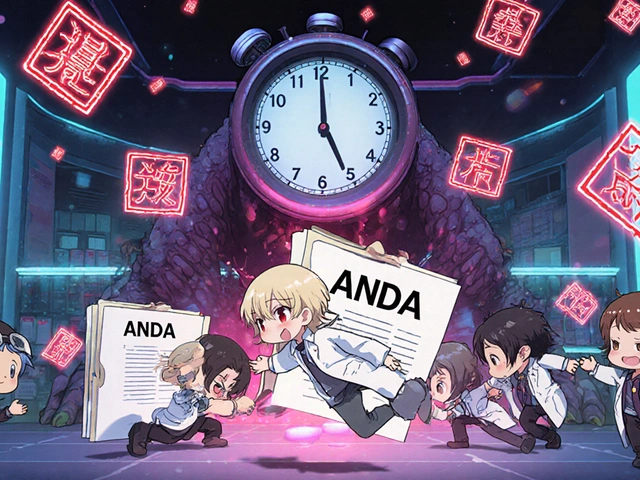When a brand-name drug’s patent expires, you’d expect generic versions to flood the market right away-lowering prices and giving patients more choices. But that’s not what usually happens. Instead, one generic company often gets a 180-day exclusivity period, blocking everyone else from entering-even if they’ve already submitted their application. This isn’t a loophole. It’s federal law. And it’s designed to reward the first company bold enough to challenge a patent. But in practice, it’s turned into a high-stakes game that can delay affordable drugs for years.
How the 180-Day Exclusivity Rule Actually Works
The rule comes from the Hatch-Waxman Act of 1984, a law meant to balance two goals: encouraging drug innovation and speeding up generic competition. The key piece? A financial incentive for generic manufacturers to challenge weak or overreaching patents. If a generic company files an Abbreviated New Drug Application (ANDA) with a Paragraph IV certification-meaning they claim the brand’s patent is invalid or not infringed-they become eligible for 180 days of market exclusivity. That exclusivity doesn’t start when the FDA approves the drug. It starts when the generic company either begins selling the drug or wins a court case that says the patent doesn’t block them. Once that trigger happens, no other generic can get approved for the same drug until those 180 days are up. Even if five other companies have identical applications sitting in the FDA’s inbox, they’re stuck waiting. This creates a winner-takes-all scenario. Only the first applicant gets the prize. And because the drug can be worth billions, companies race to be first. Some spend millions on legal teams just to file their ANDA a day earlier than the competition.Why the System Often Fails to Deliver on Time
Here’s the problem: the clock doesn’t always run. If the brand-name company sues the generic challenger for patent infringement, the FDA can’t approve any other generics for up to 30 months while the lawsuit plays out. During that time, the first generic company might sit on their approval, waiting to see if the court rules in their favor. They don’t launch the drug. They just hold it. That means the 180-day exclusivity can be delayed for years. The company still owns the right-but they’re not using it. Meanwhile, patients pay full brand prices. Competitors are locked out. The system isn’t just slow-it’s being manipulated. The FDA noticed this. In 2022, they proposed a fix: make the exclusivity period start only when the generic actually hits the market. Right now, a company could file in 2020, win a court case in 2023, and then wait until 2025 to launch-meaning the exclusivity clock doesn’t start until then. Under the new proposal, the clock would begin at launch, not at court victory. That would cut out years of delay. But even that fix has complications. The FDA also suggested extending exclusivity to 270 days if the generic company launches more than five years before the patent expires. Why? Because those early launches can disrupt the brand’s revenue in ways the law didn’t anticipate. It’s a trade-off: more incentive for early challengers, but longer monopoly time.
Who Loses When the Clock Stops?
The biggest losers? Patients and taxpayers. When a blockbuster drug like a cholesterol medication or diabetes treatment stays at brand price for years after its patent should have expired, it adds up. The U.S. spends over $1.7 trillion on prescription drugs annually, and generics save about 80% of that cost. But if the first generic delays launch, those savings vanish. Generic manufacturers who aren’t first are also hurt. They can’t compete. Even if they have the same formula, same quality, same price-they’re legally blocked. Some companies have sued the FDA over this, arguing the system violates antitrust laws. Courts have been divided, but the frustration is real. And it’s not just about big drugs. The same rule applies to low-cost generics for common conditions like high blood pressure or acid reflux. If the first applicant delays, hundreds of thousands of people pay more than they should.The Legal Tightrope: Forfeiture and Mistakes
Getting 180-day exclusivity isn’t easy. The ANDA must be “substantially complete” when filed-meaning all the data, paperwork, and certifications are there. If the FDA says it’s incomplete, the company loses its spot. That’s happened before. In Granutec, Inc. v. Shalala (1998), a company lost exclusivity because their application was missing key information, even though they thought they’d filed first. There’s also forfeiture. The 2003 Medicare Modernization Act added rules that can strip exclusivity if the company doesn’t launch within 75 days of FDA approval, or if they fail to market the drug after a court ruling. But the rules are vague. What counts as “marketing”? What if the company waits because of supply chain issues? The FDA issued a clarification in 2018 for a specific drug (buprenorphine/naloxone film), but that guidance now applies to all similar cases. Companies have to hire lawyers just to understand if they’re still eligible.



